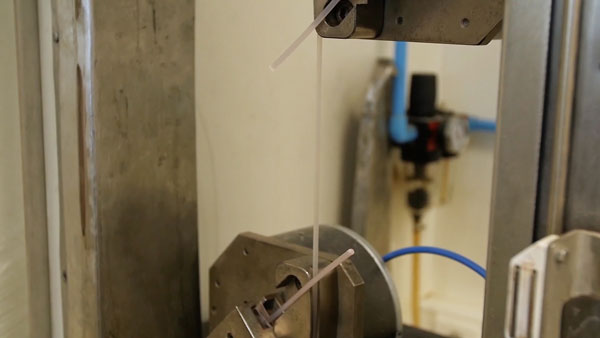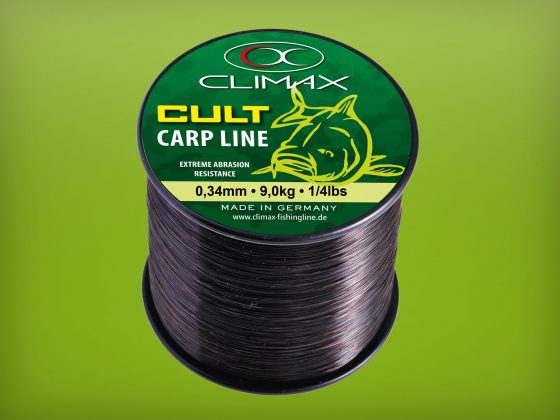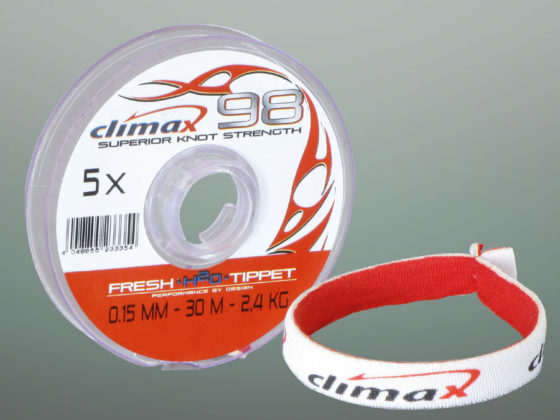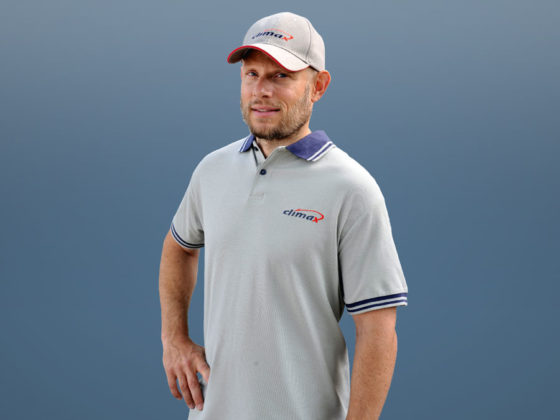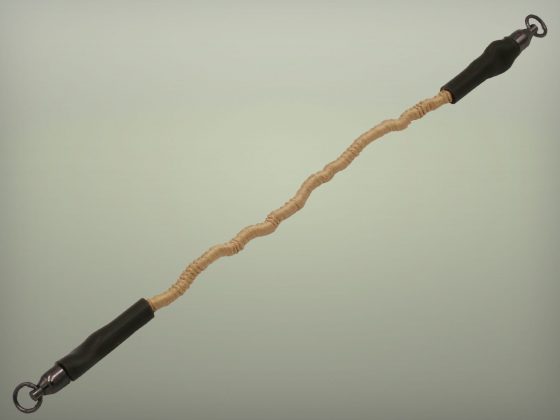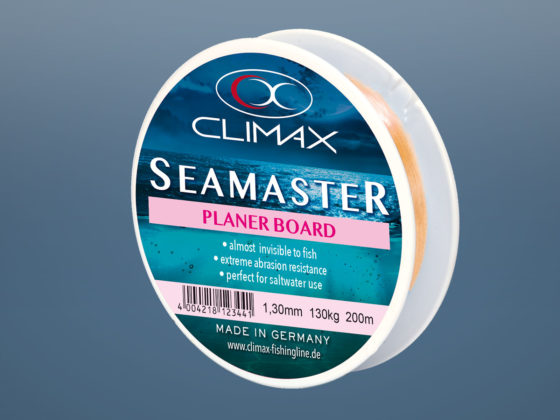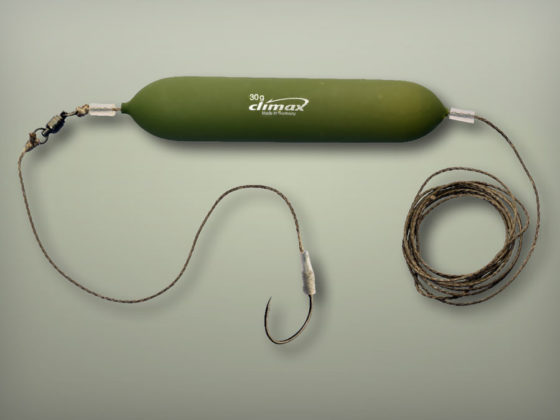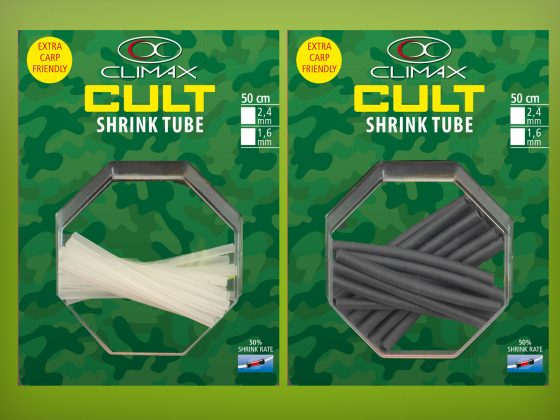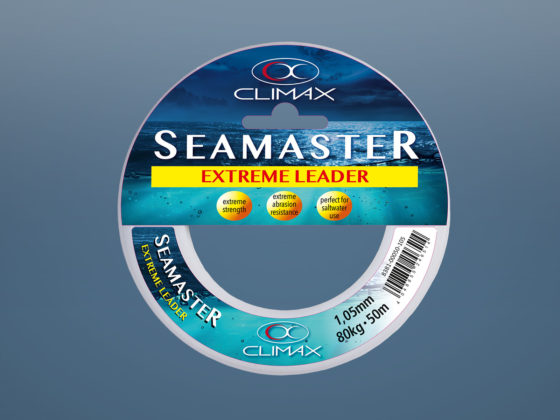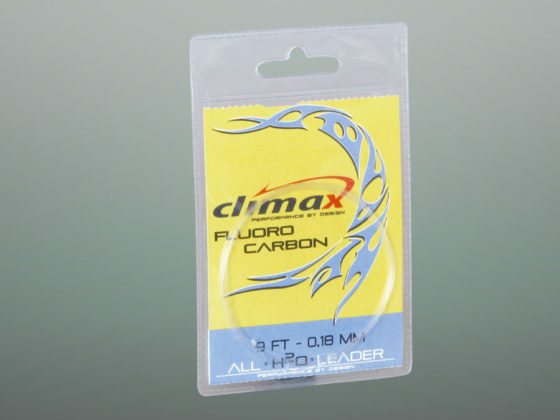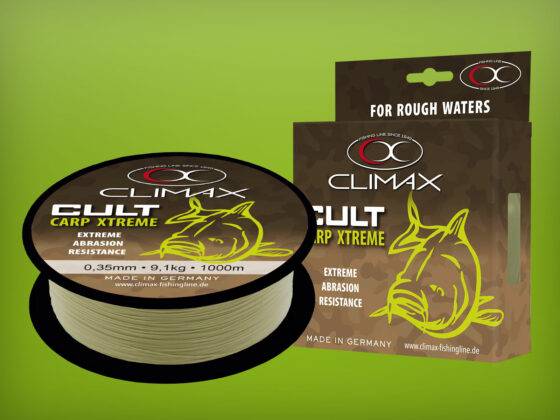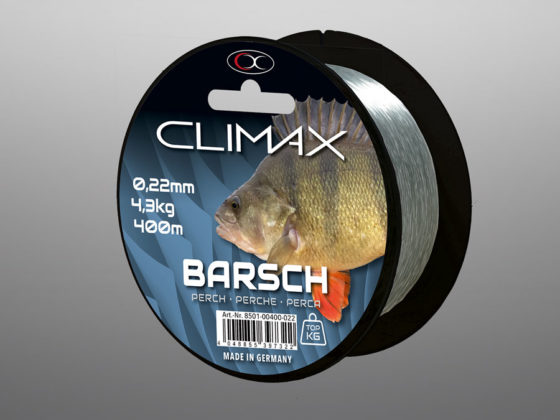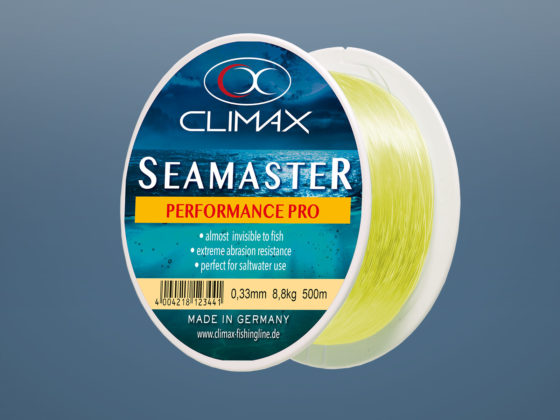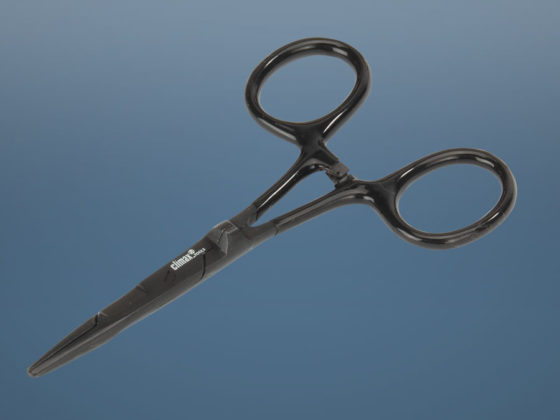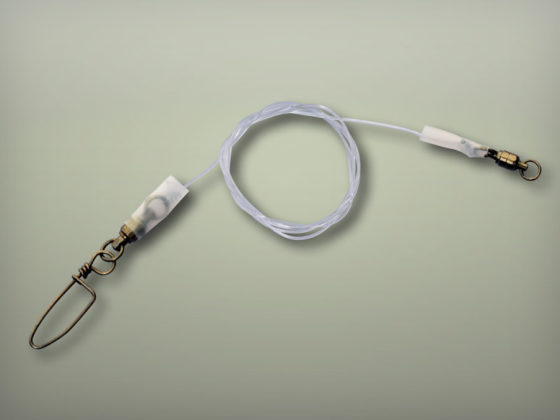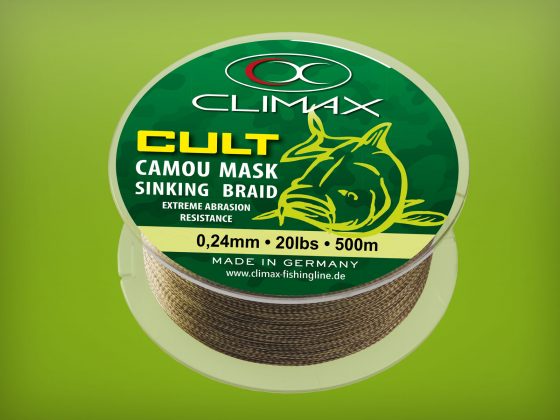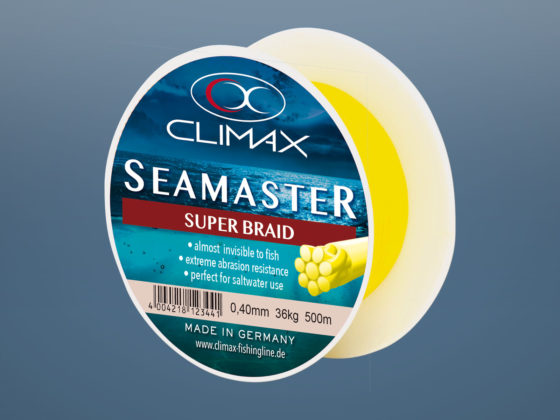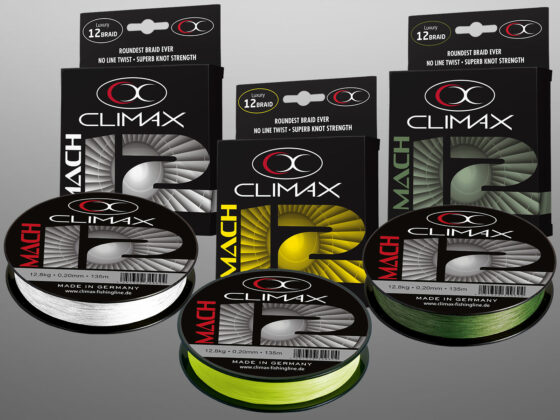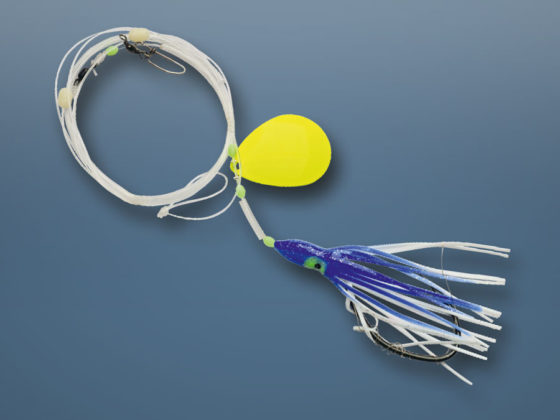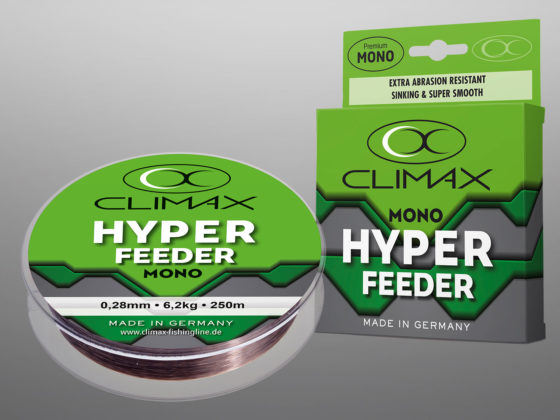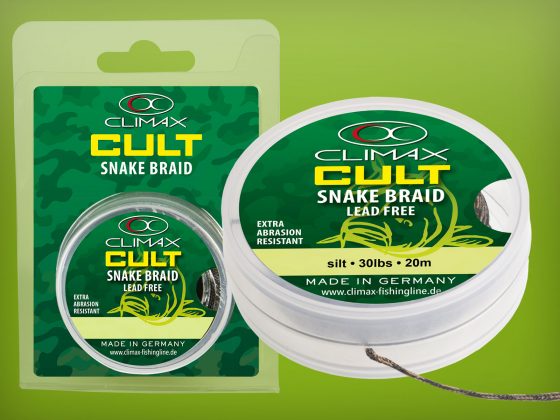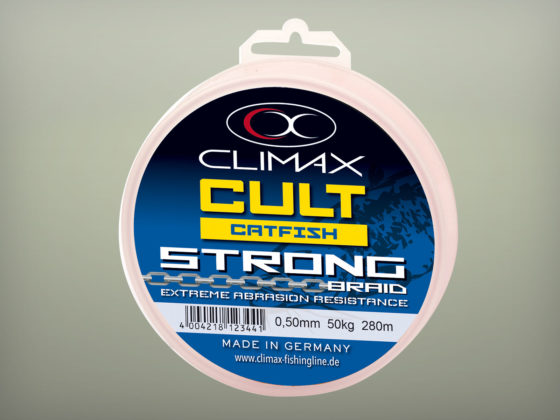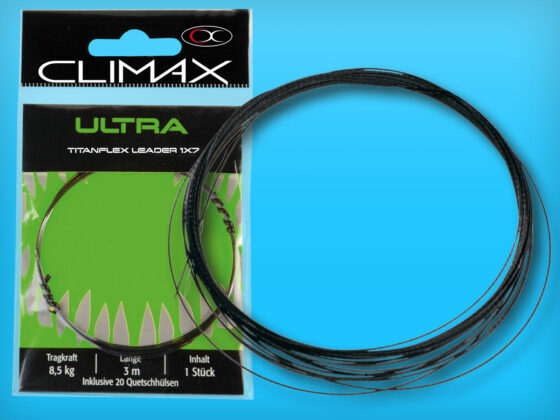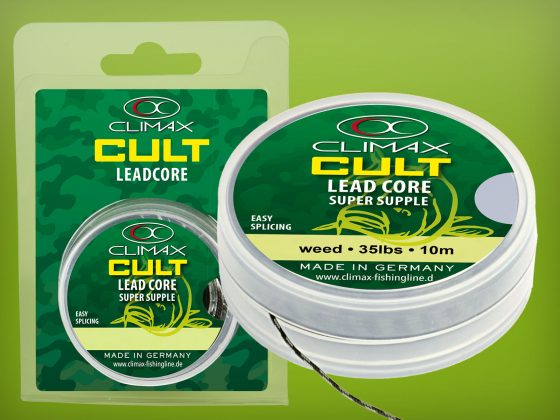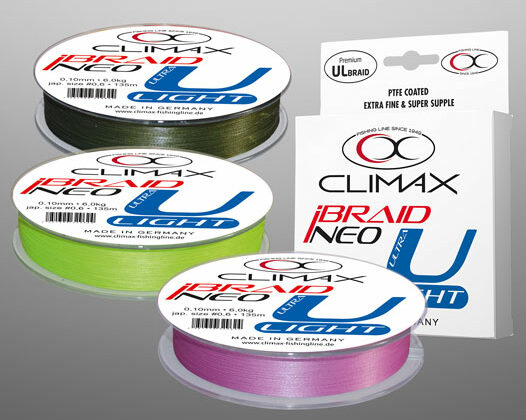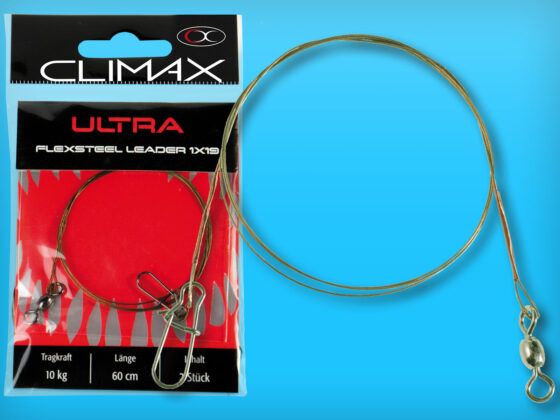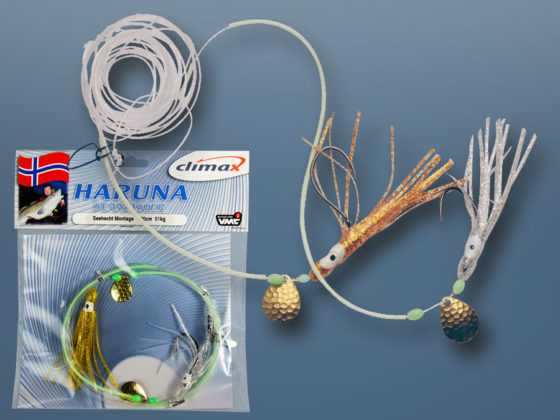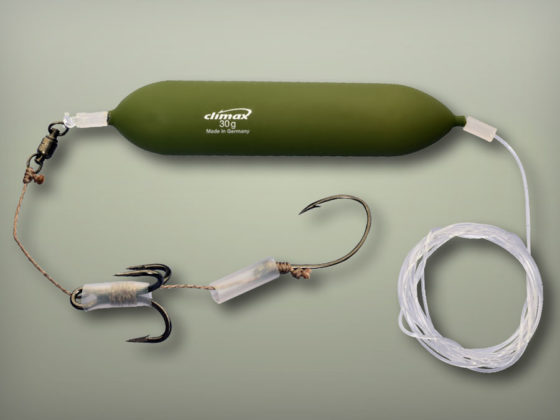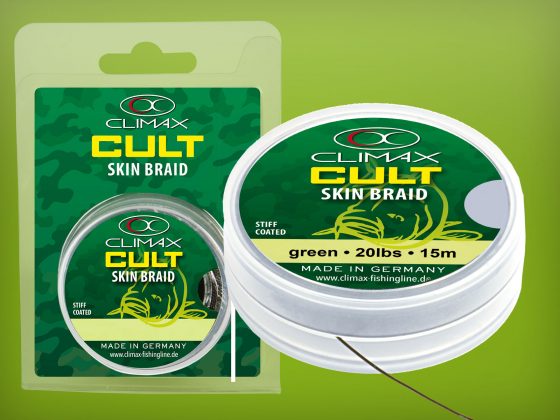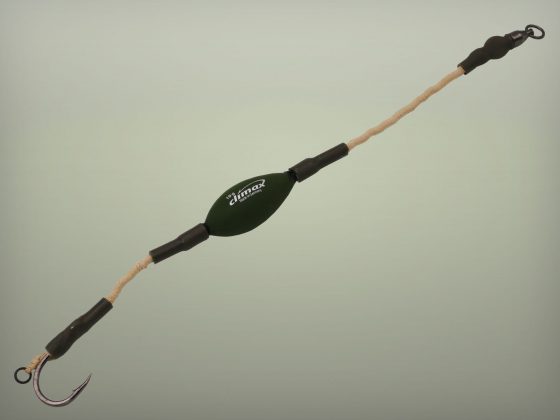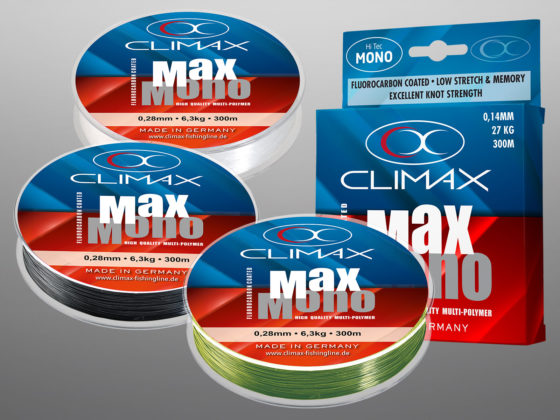About us
Performance by design
As a German manufacturer of braided and monofilament fishing lines we draw on over 60 years of experience in the development and production of fishing lines and fibres. Since the introduction of modern technology fishing lines, made of synthetic fibres since the late 1940s, we have invested our passion, creativity and knowledge into every new product. We were not only one of the first companies in Europe to make monofilament fishing lines, but in the early 1990s as the first supplier of braided fishing lines we laid the foundation for the overwhelming triumph of this new fishing line technology.
Today, anglers expect a lot more from their fishing lines. The differences between products are often minimal, but for a specialist fishing technique they can be a great advantage. On the following pages we would like to show you our product range, shed some light on the fishing line ‘jungle’, and help you with CLIMAX lines to get a little closer to your dream fish.
Products
technology
About braided lines
Basics
A fishing line is braided from at least three, and up to eight or 16 fibres. Only synthetic fibres are used, and depending on the required properties, are combined with each other – even with wire. Essentially, three factors influence the characteristics of a braided fishing line: the base fibre, the braiding, and the finishing/surface treatment. These determine the fishing environment, strength and suppleness of the line as well as the durability, abrasion resistance and of course the price.
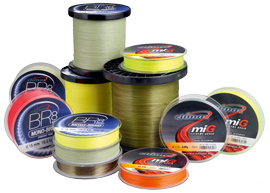
Abrasion Resistance
An unsealed Dyneema® braided line is strong, but quickly opens up its weaves with wear. All of our braided lines are sealed and therefore are much more resistant to abrasion. In addition, a method has been developed which increases the abrasion resistance of the best sealed lines approximately five-fold. The lines treated in this way have been setting the standard throughout the market place for many years for catfish or carp rigs.
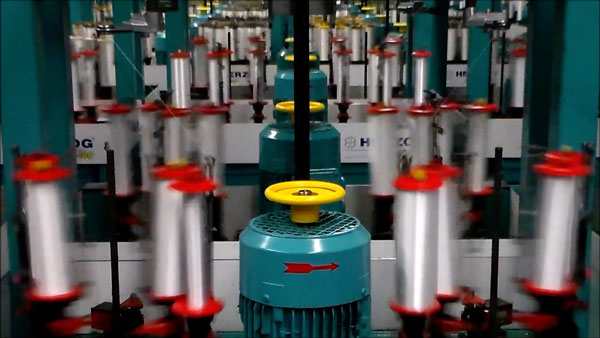
Stretch or Elasticity
Most braided lines have very low stretch of between 1% and 8% allowing unique and direct control and contact to your bait. Just for predator fishing with modern methods, such as drop shot fishing, a well braided line is without doubt the best line to use. An important issue to consider however is that a low-stretch-line means a much higher load on the unit, because each strike goes directly through the rod and reel. It means that with braided lines it is particularly important to correctly set the reel brake.
Our tip: Because of its low stretch, a braided fishing line is not always the appropriate choice for every angling method. Every ordinary fishing reel now has a spare spool, so we recommend filling one spool with a braid and the other one with a monofilament, so that you are perfectly prepared for every situation.
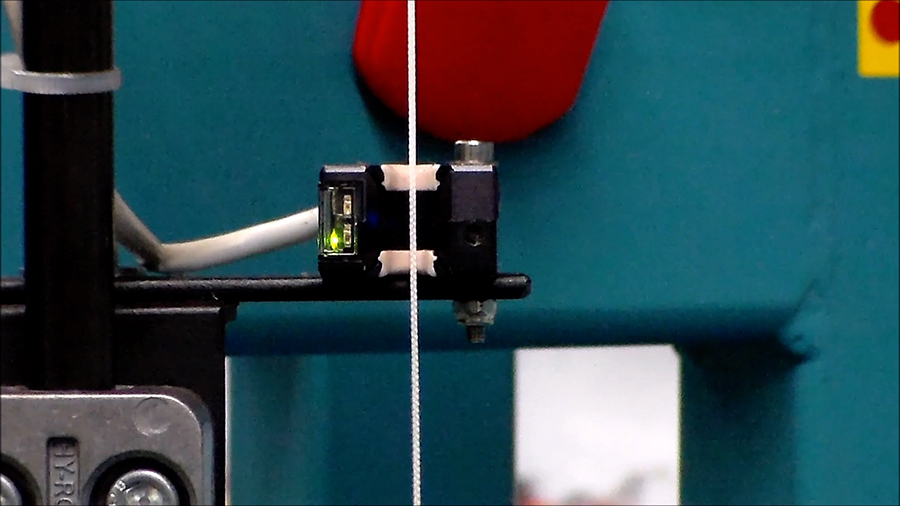
Diameter
A precise determination of the diameter of a braided line is almost impossible. This is because, despite its precise weave and special stretching, it deforms during measuring with a micrometer, while measurement of the often ‘non-round’ body using a laser is inaccurate. It is therefore common to show arithmetical approximations on the label for the diameter. For this reason we recommend you buy your braided line according to the breaking strain and do not be fooled by non-verifiable diameter information.
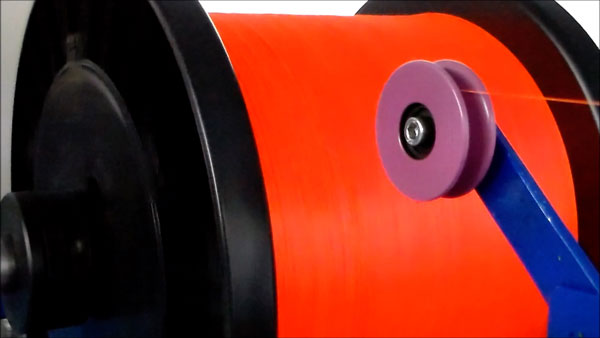
Dyneema®-Fibres
We use 100% Dyneema® fibres as the basic fibres in all major fishing lines. Weight for weight, this high-strength polyethylene fibre from the Dutch chemicals group DSM has 15 times more tensile strength than steel. With a density of 0.95 to 0.97 g/cm3 it is lighter than water and always buoyant.
Colour
In the manufacture of a monofilament fishing line, colour pigments are usually added to the plastic granules – these lines are coloured throug out, and therefore have almost no colour run. It is different for braided lines. The Dyneema® fibre itself is pure white and very chemically resistant.
The surface of this fibre does not absorb any colour. The colouring process is thus accomplished by ‘attaching’
the pigments to the surface of the line, and over time this can fade out. Each fisherman has had his own experiences with fishing line colours.
There are species of fish, like salmon, which are more sensitive and other species, such as most cyprinids, which are less responsive to colour. Climax braids are always available in both bright colours and camouflage, so that you are properly prepared for every kind of angling.
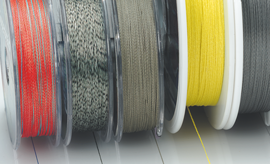
Braiding
Basically, we distinguish between two types of weave – round or symmetrical , and oval or asymmetrical. Also, the closeness of the weave, ie. the number of knots per cm, plays an important role. Climax fishing lines are braided in an extremely stable and precise manner to make them highly reliable. The quality of the weave also affects the price, because a close weave requires a slower machine braiding speed. Currently the new 8-braided TOUCH sets the benchmark for braids – it is perfectly smooth, round and feels very supple.
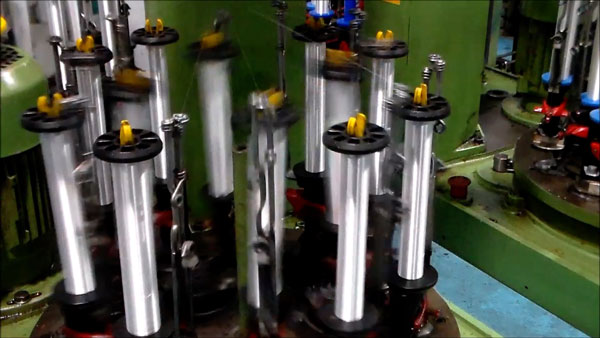
Knots and knot strength
What use is the best line when the knot rises or even tears? Climax braids are specially treated so that each knot has a strength of 70% to 90%. Especially strong stretched, fused and heat sealed lines often have a much smaller knot strength. Here are a few knots for braided lines that we can recommend:
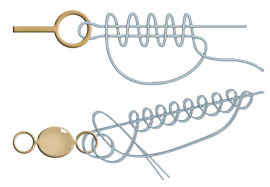
Care
After prolonged use and especially when fishing in salt water, it is advisable to rinse the line with tap water. After drying, you can treat your braid with a fishing line care product. For this we offer CLIMAX Soft and Protector for cleaning & protecting. This cleans even the smallest dirt particles and covers your line with an effective protec-tive,non-greasy film.
Note: Check regularly the first 20 metres of your line. If there are signs of a roughened surface and torn individual threads, cut off the damaged piece and replace your rig.
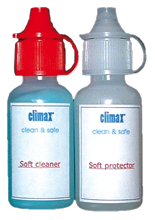
Splicing
Thanks to the technique of splicing, especially hollow braids (eg lead core) can be provided with knotless and flexible loops. The loose end of line is placed here for looping and pulled into the interior of the line. On the production line, the braid pulls itself together and clutches itself so tightly that the loop can no longer open. See figure.
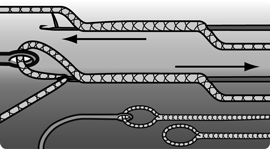
Breaking strain
The breaking strain specified on the label should help the angler to compare different lines with regard to the line diameter and select the right product for himself. To this end, fishing lines of all manufacturers are always tested for their breaking strain under the same laboratory conditions. Unfortunately, not all manufacturers adhere to these practices and mislead the buyer with some extremely ‘embellished’ breaking strain information.
The linear breaking strain of a line measures the tensile strength without knots. Braided Dyneema® lines have a significantly higher linear breaking strain than monofilament. On the other hand, the knot strength of a braid lies partially below 70% of the linear stability, while a monofilament value can reach up to 99% in the knot.
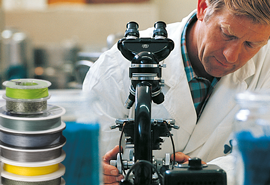
Sealing
After precise braiding, the surface treatment is above all the most important factor in producing a well braided fishing line. The refining process is probably the best kept secret of each braiding factory. Without giving details, we differ in the production of three major refining processes: stretching, thermo-fixation and sealing. Together, these procedures provide for the excellent casting characteristics, knot strength and abrasion resistance of Climax lines.
About monofilament lines
Basics
High-Tech made of carbon, hydrogen & air.
Monofilament fishing lines are made from polyamide (nylon) pellets, which are liquefied in an extruder and subsequently pressed through fine holes in a spinning nozzle under high pressure. After cooling in a water bath, these threads are expanded by a multiple of their initial length until they are stretched to their final diameter.
Depending upon line quality, the threads are put through various immersion baths to receive special coatings for more surface hardness, UV-protection etc. Thanks to the ability to add additives like colour pigments and plasticizers, co-polymers can be manufactured in different colours and with different attributes.
The advantages of these lines are obvious: they have a controlled stretch, the line surface is very smooth and there are many colour variations ranging from transparent to opaque black. The price of a monofilament fishing line is significantly less than for a braided line. The diameter is more accurately calibrated, and the knot strength in relation to breaking strain is very good.
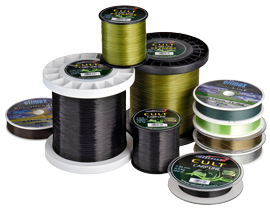
Abrasion Resistance
If you take into account the load on a line due to friction in the rings, obstacles or fish teeth, the importance of this property is readily apparent. By special processing and coating, it is possible for us to increase the abrasion resistance by up to 12-fold and thus produce bespoke lines for specific requirements.
One special form is Climax HardMono and Fluorocarbon: In both cases we use a fundamentally harder and denser raw material and thereby achieve – in addition to other specific properties of these products – a much higher abrasion resistance than with conventional polyamide monofilament.
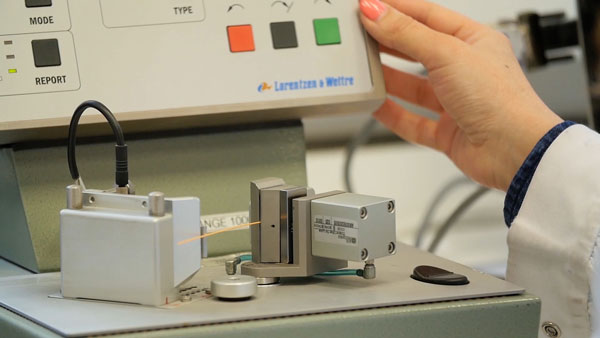
Stretch or Elasticity
The stretching of a line plays an essential role in many fishing situations.
Basically, a monofilament line has a stretch of between 15% and 35%, whereby the lesser stretch is typical particularly for fluorocarbon lines and the rather longer stretch of smooth co-polymers, which are used in particular for carp lines.
More stretch has the effect of being springy during the play, protects the knots and prevents the hook from sliding off. In addition, an elastic line protects your fishing tackle, since the strike and play do not impact so directly on rod and reel. Too much stretch however also makes accurate ground baiting more difficult, gives you less control during the play and can considerably weaken a powerful strike.

Label
Eye up your purchase. Do not believe everything that a new wonder line promises and instead check out the critical diameter and breaking strain information. Unfortunately they are still very much exaggerated, often far beyond the technically feasible limits. For years CLIMAX has been working actively with other manufacturers on a European solution to this false labeling and is amongst some of the first signatories of the EFTTA Line Charter which is addressing this problem.
Tip: 3.5kg to 4kg breaking load with 0.20 mm diameter is regarded as a reliable reference for a very, very good monofilament line. Significantly higher data suggest mis-labelling.
If you want to find out more, visit the EFTTA website (www.eftta.com) on which regularly conducted laboratory tests results and ‘black sheep’ are published.
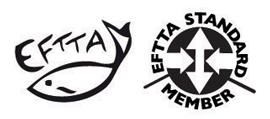
Colour
A monofilament fishing line is usually dyed. This means that colour pigment is pre-mixed in with the plastic granulate and these lines are almost non-fade. It is different for braided lines.
The colours of our monofilament lines are individually tailored and optimised to target certain types of angling and in certain cases, specific fish.
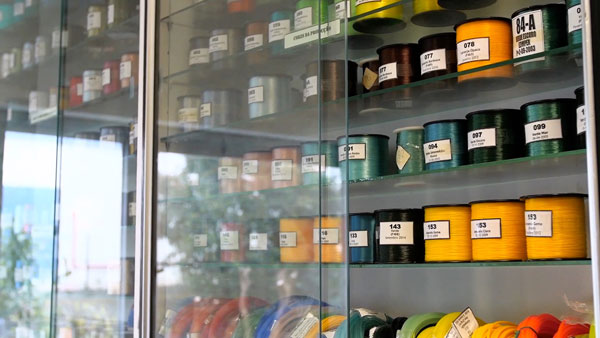
Fluorocarbon
All Climax fluorocarbon lines are 100% fluorocarbon.
Unlike conventional nylon monofilaments, fluorocarbon is very heavy, so these lines sink quickly. In addition, fluorocarbon does not absorb water, which means the breaking strain and elasticity are not altered, even after long use in the water.
The material is extremely resistant to abrasion and its refraction index is extremely close to that of water, whereby the line itself is very difficult to see for fish with good vision. For these reasons fluorocarbon is a popular choice for predatory fish.
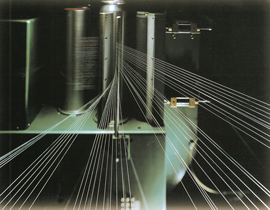
Knots and knot strength
What use is the best fishing line when the knot rises or even tears? Depending on the raw material, the processing, and of course depending on the knots, a monofilament has a knot strength of 75% to 99%. The harder fluorocarbon reaches a knot strength of 60% to 80%. Generally speaking, the greater the stretch and flexibility of the line, the greater the knot strength.
Our tip: The hard fluorocarbon can literally squeeze and finally cut the much softer Co-polymer. Therefore, we recommend the use of a swivel when connecting these different materials with each other.
Memory
This refers to the ‘memory’ of monofilament lines at the time of being on a spool. If the line curls strongly during unwinding, then it has a lot of ‘memory’. The longer the line is on a spool, the more it will curl – dryness and high temperatures enhance this effect. Due to a special treatment directly after extrusion, we at Climax reduce this effect as much as possible. However the memory cannot be completely eliminated since other properties of the line greatly suffer. Soft stretch lines with more stretch generally have less memory.
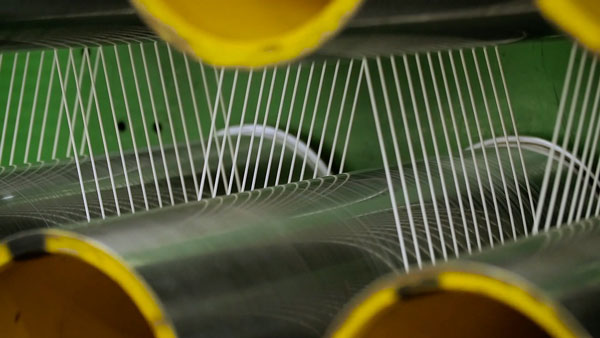
Braking strain
